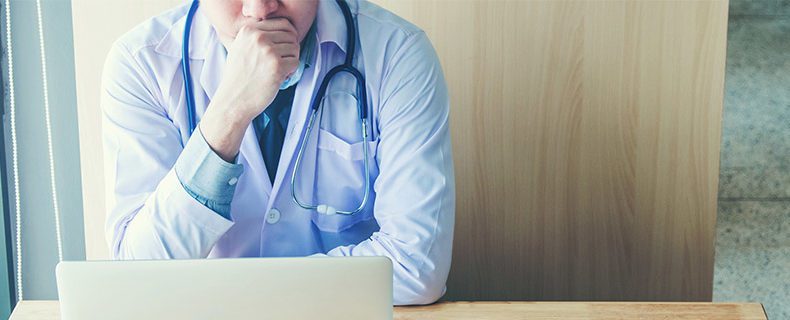Blog Posts
Are your patients ‘Medical Distancing’?


For the past few months we have been overwhelmed with hearing about ‘social distancing’ to help protect ourselves and others from the effects of COVID-19. Social distancing had Americans doing their best to maintain a six-foot distance from others that did not live in the same residence. We were asked to stay home when possible to help minimize the spread of infection. Unfortunately, an unforeseen, potentially unhealthy byproduct came out of social distancing called “medical distancing.” This refers to patients avoiding or delaying seeking medical help for conditions that previously would have had them going to a physician’s office or an emergency room.
Why medical distancing is troublesome
Medical distancing is becoming a widespread concern for many physicians in a number of different practice settings. Although some patients may still be avoiding healthcare settings or services for fear of contracting COVID-19, the long-term consequences for these patients may pose a risk. As some medical problems can easily be discussed through a telemedicine visit, others require a patient to be seen at a medical facility. Cardiac or neurologic symptoms are primary examples. Allowing potential heart attack or stroke symptoms to persist can lead to high-risk interventional procedures that may have been addressed with less invasive methods.
My experience
As a pharmacist, I was initially wary to go back to my physicians’ offices, but I was pleasantly surprised with the processes some have put together to help keep patients safe. My orthopedist office, for example, normally has about 30 chairs in the waiting room with four receptionists and usually runs at about 80% of capacity daily. The office now requires patients to call in from their car when they arrive; the office staff then calls back when they are ready to have the patient enter the facility. Upon entry with required mask, a triage desk will take the patient’s temperature and have them answer some safety questions. Only one patient can be present in the lobby until they get called back to a treatment room. The staff then disinfects the chair used in the lobby.
Encouraging patients
It is important to remind patient communities that physician offices are here for them, especially in this challenging time. Offices need to have processes to help determine which patient issues can be managed via telemedicine versus which patients should be seen in person, especially when laboratory values or radiology scans need to be ordered. Being transparent about the new safety policies, including the thorough cleaning regimens being implemented, is an important piece in trying to encourage patients to return to in-person care. When counseling patients, I often tell them “protecting yourself against getting this virus does not need to come at the expense of your overall health.”
With more than 75% of Americans having had some aspect of their healthcare disrupted due to COVID-19, understanding why we need to stop medical distancing is crucial.












